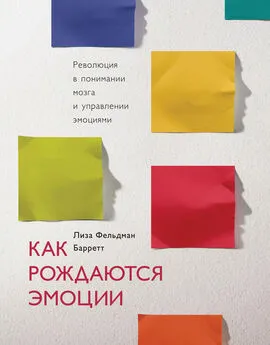Джошуа Кертисс - Не позволяйте тревоге рулить вашей жизнью [Наука управления эмоциями. Наука управления эмоциями и осознанность для преодоления страха и беспокойства] [litres]
- Название:Не позволяйте тревоге рулить вашей жизнью [Наука управления эмоциями. Наука управления эмоциями и осознанность для преодоления страха и беспокойства] [litres]
- Автор:
- Жанр:
- Издательство:Литагент Весь
- Год:2019
- Город:Санкт-Петербург
- ISBN:978-5-9573-3452-1
- Рейтинг:
- Избранное:Добавить в избранное
-
Отзывы:
-
Ваша оценка:
Джошуа Кертисс - Не позволяйте тревоге рулить вашей жизнью [Наука управления эмоциями. Наука управления эмоциями и осознанность для преодоления страха и беспокойства] [litres] краткое содержание
Практически все в нашей жизни потенциально может вызвать тревогу, но только в том случае, если вы это позволите Другими словами, вполне реально управлять своей тревогой, изучив отношения с собственными эмоциями, вызывающими страх и беспокойство, и приняв их (а не избегая!).
Наша книга предназначена для того, чтобы обучить вас науке управления эмоциями, чтобы противостоять тревоге или снизить ее уровень.
Не позволяйте тревоге рулить вашей жизнью [Наука управления эмоциями. Наука управления эмоциями и осознанность для преодоления страха и беспокойства] [litres] - читать онлайн бесплатно ознакомительный отрывок
Интервал:
Закладка:
Coffey, К. A., and M. Hartman. 2008. “Mechanisms of Action in the Inverse Relationship Between Mindfulness and Psychological Distress.” Complementary Health Practice Review 13 (2): 79–91.
Corcoran, К. M., N. Farb, A. Anderson, and Z. V. Segal. 2010. “Mindfulness and Emotion Regulation.” In Emotion Regulation and Psychopathology: A Transdiagnostic Approach to Etiology and Treatment , edited by A. M. Kring and D. M. Sloan. New York: Guilford Press.
Cucchi, M., V. Bottelli, D. Cavadini, L. Ricci, V. Conca, P. Ronchi, and E. Smeraldi. 2012. “An Explorative Study on Metacognition in Obsessive-Compulsive Disorder and Panic Disorder.” Comprehensive Psychiatry 53 (5): 546-53.
Curtiss, J., and D. H. Klemanski. 2014a. “Factor Analysis of the Five Facet Mindfulness Questionnaire in a Heterogenous Clinical Sample.” Journal of Psychopathology and Behavioral Assessment 36 (4): 683–694.
Curtiss, J., and D. H. Klemanski. 2014b. “Teasing Apart Low Mindfulness: Differentiating Deficits in Mindfulness and in Psychological Flexibility in Predicting Symptoms of Generalized Anxiety Disorder and Depression.” Journal of Affective Disorders 166: 41–47.
Davidson, R. J. 2010. “Empirical Explorations of Mindfulness: Conceptual and Methodological Conundrums.” Emotion 10 (1): 8-11.
Desrosiers, A., V. Vine, J. Curtiss, and D. H. Klemanski. 2014. “Observing Nonreactively: A Conditional Process Model Linking Mindfulness Facets, Cognitive Emotion Regulation Strategies, and Depression and Anxiety Symptoms.” Journal of Affective Disorders 165: 31–37.
Dresler, T., K. Meriau, H. R. Heekeren, and E. van der Meer. 2009. “Emotional Stroop Task: Effect of Word Arousal and Subject Anxiety on Emotional Interference.” Psychological Research 73 (3): 364-71.
Drost, J., W. van der Does, A. M. van Hemert, B. W. Penninx, and P. Spinhoven. 2014. “Repetitive Negative Thinking as a Transdiagnostic Factor in Depression and Anxiety: A Conceptual Replication.” Behaviour Research and Therapy 63: 177-83.
Ehlers, A., and D. M. Clark. 2000. “A Cognitive Model of Posttraumatic Stress Disorder.” Behaviour Research and Therapy 38 (4): 319-45.
Erisman, S. M., and L. Roemer. 2010. “A Preliminary Investigation of the Effects of Experimentally Induced Mindfulness on Emotional Responding to Film Clips.” Emotion 10 (1): 72.
Forgas, J. P. 2014. “Can Sadness Be Good for You?: On the Cognitive, Motivational, and Interpersonal Benefits of Negative Affect” In The Positive Side of Negative Emotions , edited by W. G. Parrott. New York: Guilford Press.
Friedman, В. H., and J. F. Thayer. 1998. “Autonomic Balance Revisited: Panic Anxiety and Heart Rate Variability.” Journal of Psychosomatic Research 44 (1): 133-51.
Frijda, N. H. 1986. The Emotions. Cambridge: Cambridge University Press.
Gilboa-Schechtman, E., E. B. Foa, and N. Amir. 1999. “Attentional Biases for Facial Expressions in Social Phobia: The Face-in-the-Crowd Paradigm.” Cognition and Emotion 13 (3): 305-18.
Gross, J. J. 1998. “The Emerging Field of Emotion Regulation: An Integrative Review.” Review of General Psychology 2 (3): 271.
–-. 2008. “Emotion Regulation.” In Handbook of Emotions,
3 rded., edited by M. Lewis, J. M. Haviland-Jones, and L. Feldman Barrett. New York: Guilford Press.
Gross, J. J., and R. A. Thompson. 2007. “Emotion Regulation: Conceptual Foundations.” In Handbook of Emotion Regulation, edited by J. J. Gross. New York: Guilford Press.
Gyurak, A., J. J. Gross, and A. Etkin. 2011. “Explicit and Implicit Emotion Regulation: A Dual-Process Framework.” Cognition and Emotion 25 (3): 400–412.
Hansen, С. H., and R. D. Hansen. 1988. “Finding the Face in the Crowd: An Anger Superiority Effect.” Journal of Personality and Social Psychology 54 (6): 917-24.
Hauser, M., F. Cushman, L. Young, R. Kang-Xing Jin, and J. Mikhail. 2007. “A Dissociation Between Moral Judgments and Justifications.” Mind and Language 22 (1): 1-21.
Haybron, D. M. 2014. “The Value of Positive Emotion: Philosophical Doubts and Reassurances.” In Positive Emotion: Integrating the Light Sides and Dark Sides, edited by J. Gruber and J. Tedlie Moskowitz. New York: Oxford University Press.
Hayes, S. C. 2004. “Acceptance and Commitment Therapy, Relational Frame Theory, and the Third Wave of Behavioral and Cognitive Therapies.” Behavior Therapy 35 (4): 639–665.
Hayes, S. C., J. B. Luoma, F. W. Bond, A. Masuda, and J. Lillis. 2006. “Acceptance and Commitment Therapy: Model, Processes and Outcomes.” Behaviour Research and Therapy 44 (1): 1-25.
Hayes, S. С, K. D. Strosahl, & K.G. Wilson. 2011. Acceptance and Commitment Therapy: The Process and Practice of Mindful Change. New York: Guilford Press.
Heeren, A., H. E. Reese, R. J. McNally, and P. Philippot. 2012. “Attention Training Toward and away from Threat in Social Phobia: Effects on Subjective, Behavioral, and Physiological Measures of Anxiety.” Behaviour Research and Therapy 50 (1): 30–39.
Herbert, J. D., and E. M. Forman, eds. 2011. Acceptance and Mindfulness in Cognitive Behavior Therapy: Understanding and Applying the New Therapies. Hoboken, NJ: John Wiley & Sons.
Hill, C. L., and J. A. Updegraff. 2012. “Mindfulness and Its Relationship to Emotional Regulation.” Emotion 12 (1): 81–90.
Hofmann, S. G., S. Heering, A. T. Sawyer, and A. Asnaani. 2009. “How to Handle Anxiety: The Effects of Reappraisal, Acceptance, and Suppression Strategies on Anxious Arousal.” Behaviour Research and Therapy 47 (5): 389-94.
Hofmann, S. G., A. T. Sawyer, A. A. Witt, and D. Oh. 2010. “The Effect of Mindfulness-Based Therapy on Anxiety and Depression: A Meta-analytic Review.” Journal of Consulting and Clinical Psychology 78 (2): 169.
Kabat-Zinn, J. 1994. Wherever You Go, There You Are: Mindfulness Meditation in Everyday Life. New York: Hyperion.
–-. 2009. Full Catastrophe Living: Using the Wisdom of Your
Body and Mind to Face Stress, Pain, and Illness. 15th anniversary ed., with a new introduction by the author. New York: Delta.
Kessler, R. C., W. T. Chiu, O. Dernier, and E. E. Walters. 2005. “Prevalence, Severity, and Comorbidity of 12-month DSM-IV Disorders in the National Comorbidity Survey Replication.” Archives of General Psychiatry 62 (6): 617-27.
Koster, E., G. Crombez, S. van Damme, B. Verschuere, and J. de Houwer. 2005. “Signals for Threat Modulate Attentional Capture and Holding: Fear-Conditioning and Extinction During the Exogenous Cueing Task. Cognition and Emotion 19 (5): 771-80.
Larsen, R. 2000. “Toward a Science of Mood Regulation.” Psychological Inquiry 11: 129-41.
Lau, H. P. В., M. P. White, and S. Schnall. 2013. “Quantifying the Value of Emotions Using a Willingness to Pay Approach.” Journal of Happiness Studies 14: 1543-61.
LeDoux, J. 2015. Anxious: Using the Brain to Understand and Treat Fear and Anxiety. New York: Viking.
LeDoux, J. E., and J. M. Gorman. 2001. £CA Call to Action: Overcoming Anxiety Through Active Coping.” American Journal of Psychiatry 158 (12): 1953-55.
Lee, J. }., E Gino, and B. R. Staats. 2014. “Rainmakers: Why Bad Weather Means Good Productivity.” Journal of Applied Psychology 99 (3): 504.
Lee, J. K., and S. M. Orsillo. 2014. “Investigating Cognitive Flexibility as a Potential Mechanism of Mindfulness in Generalized Anxiety Disorder.” Journal of Behavior Therapy and Experimental Psychiatry 45 (1): 208-16.
Llera, S. J., and M. G. Newman. 2014. “Rethinking the Role of Worry in Generalized Anxiety Disorder: Evidence Supporting a Model of Emotional Contrast Avoidance.” Behavior Therapy 45 (3): 283-99.
Lundh, L. G., and M. Sperling. 2002. “Social Anxiety and the Post-event Processing of Socially Distressing Events.” Cognitive Behaviour Therapy 31 (3): 129-34.
National Safety Council. 2015. “Knowledge Is Power: Understanding Our £Odds of Dying Can Help Us Make Safer Choices, Says National Safety Council.” http://www.nsc.org/learn/about/Pages/ Understanding-Our-Odds-of-Dying-Make-Safer-Choices.aspx.
Newman, M. G., S. }, Llera, T. M. Erickson, A. Przeworski, and L. G. Castonguay. 2013. “Worry and Generalized Anxiety Disorder: A Review and Theoretical Synthesis of Evidence on Nature, Etiology, Mechanisms, and Treatment.” Annual Review of Clinical Psychology 9: 275-97.
Nolen-Hoeksema, S., В. E. Wisco, and S. Lyubomirsky. 2008. “Rethinking Rumination.” Perspectives on Psychological Science 3 (5): 400–424.
Ohman, A., and S. Mineka. 2001. “Fears, Phobias, and Preparedness: Toward an Evolved Module of Fear and Fear Learning.” Psychological Review 108 (3): 483–522.
Ortner, C. N., S. J. Kilner, and P. D. Zelazo. 2007. “Mindfulness Meditation and Reduced Emotional Interference on a Cognitive Task.” Motivation and Emotion 31 (4): 271-83.
Penney, E. S., and M. J. Abbott. 2015. “The Impact of Perceived Standards on State Anxiety, Appraisal Processes, and Negative Pre-and
Post-event Rumination in Social Anxiety Disorder” Cognitive Therapy and Research 39 (2): 162-77.
Perkins, A. M., and P. J. Corr. 2014. “Anxiety as an Adaptive Emotion.” In The Positive Side of Negative Emotions , edited by W. G. Parrott. New York: Guilford Press.
Pineles, S. L., and S. Mineka. 2005. “Attentional Biases to Internal and External Sources of Potential Threat in Social Anxiety.” Journal of Abnormal Psychology 114 (2): 314-18.
Plumb, J. C., S. M. Orsillo, and J. A. Luterek. 2004. “A Preliminary Test of the Role of Experiential Avoidance in Post-event Functioning.” Journal of Behavior Therapy and Experimental Psychiatry 35 (3): 245-57.
Powers, M. B., J. A. Smits, and M. J. Telch. 2004. “Disentangling the Effects of Safety-Behavior Utilization and Safety-Behavior Availability During Exposure-Based Treatment: A Placebo-Controlled Trial.” Journal of Consulting and Clinical Psychology 72 (3): 448.
Richards, T. A. 2014. “The Paradox of the Rain: An Anxiety Parable.” http://anxietynetwork.com/content/paradox-rain-anxiety-parable.
Rinck, M., E. S. Becker, J. Kellermann, and W. T. Roth. 2003. “Selective Attention in Anxiety: Distraction and Enhancement in Visual Search.” Depression and Anxiety 18 (1): 18–28.
Roemer, L., and T. D. Borkovec. 1994. “Effects of Suppressing Thoughts About Emotional Material.” Journal of Abnormal Psychology 103 (3): 467-74.
Safran, J. D., and Z. V. Segal. 1990. Interpersonal Process in Cognitive Therapy. New York: Basic Books.
Scherer, K. R. 2005. “What Are Emotions? And How Can They Be Measured?” Social Science Information 44 (4): 695–729.
Segal, Z. V, J. M. G. Williams, and J. D. Teasdale. 2002. Mindfulness-Based Cognitive Therapy for Depression: A New Approach to Preventing Relapse. New York: Guilford Press.
Shapiro, S. L., L. E. Carlson, J. A. Astin, and B. Freedman. 2006. “Mechanisms of Mindfulness.” Journal of Clinical Psychology 62 (3): 373-86.
Teper, R., Z. V. Segal, and M. Inzlicht. 2013. “Inside the Mindful Mind: How Mindfulness Enhances Emotion Regulation Through Improvements in Executive Control.” Current Directions in Psychological Science 22 (6): 449-54.
Читать дальшеИнтервал:
Закладка:
![Обложка книги Джошуа Кертисс - Не позволяйте тревоге рулить вашей жизнью [Наука управления эмоциями. Наука управления эмоциями и осознанность для преодоления страха и беспокойства] [litres]](/books/1080691/dzhoshua-kertiss-ne-pozvolyajte-trevoge-rulit-vashej.webp)





![Элизабет Карле - Перенастройте свой встревоженный мозг [Как использовать неврологию страха, чтобы остановить тревогу, панику и беспокойство] [litres]](/books/1076357/elizabet-karle-perenastrojte-svoj-vstrevozhennyj-mo.webp)



